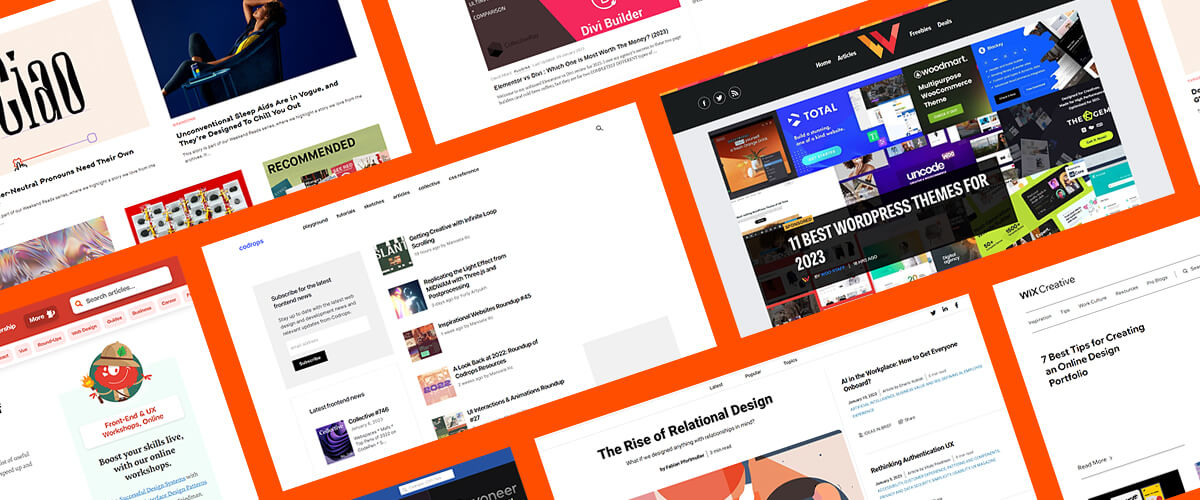Walk into any corporate office. What do you see? Core values on the wall. Integrity. Excellence. Innovation. Teamwork.
Now watch what happens when money’s on the line. When the difficult client waves a big check. When the top performer treats people like garbage. When doing the right thing costs real dollars.
Those pretty words disappear faster than free pizza at a dev meetup.
I’ve been running agencies and working with founders for 20+ years. I’ve seen what real culture looks like—and what performative values destroy.
Here’s the thing: if your core values haven’t cost you money, they’re not values. They’re decorations.
The expensive truth about real values
I’ve built businesses from scratch. Worked with hundreds of companies. And here’s the pattern I see constantly:
Most businesses have values. Maybe 5% actually use them.
The difference? Real values hurt. They force you to make expensive decisions. They make you say no to good money. They create awkward conversations.
Real values are filters that cost you opportunities in service of building something authentic.
Think about it. If your value is “quality over speed,” what happens when a client needs something rushed? You either violate your value or lose the money. There’s no middle ground.
If your value is “transparency,” what happens when a client asks you to fudge numbers? You tell the truth and risk the relationship, or you compromise and prove your values are just suggestions.
Every real value creates a moment that costs you something—and defines who you are.
Most businesses aren’t willing to pay that price. So they pick safe, generic values that never actually conflict with making money.
That’s not values. That’s marketing copy.
“If your values never make you uncomfortable, they’re just slogans.”
The greatest hits of fake values
Before we go deeper, let’s acknowledge the elephant on every corporate wall:
“Excellence in all we do” = We don’t actually know what we’re excellent at
“Innovation” = We bought Slack and called it digital transformation
“Integrity” = We’ll be honest unless it costs us money
“Customer first” = Customer first until they complain too much
“Teamwork” = Everyone plays nice until bonuses are on the line
“Work-life balance” = We have a ping pong table you’ll never use
Sound familiar? These aren’t values. They’re what you write when you need something on the About page.
The brutal test that reveals everything
Want to know if your values are real? Here’s the test:
Question 1: When’s the last time a core value cost you a deal? Not “we were too busy.” Not “it wasn’t a good fit.” I mean you explicitly said no to good money because the work violated a value.
Question 2: Would you fire your best performer for a values violation? Not a warning. Not a coaching conversation. Actual termination of someone who makes you money.
Question 3: Can your team explain a decision they made this week using your values? Not recite the values. Actually say: “I chose X over Y because of our value of Z.”
Question 4: Do your values ever conflict with each other, forcing hard choices? Real values create tension. If yours always align perfectly, they’re probably too vague to mean anything.
Here’s what I’ve noticed: when I ask these questions, most people get quiet. They realize their values have never actually been tested.
BTW – this isn’t about being some kind of moral superhero. It’s about being honest about what actually drives your decisions. Because your real values are revealed by your choices, not your posters.
Real values live in your trade-offs—not your mission statement
The things you give up, the hills you die on, the lines you won’t cross—those are your values. Forget the brainstorm sessions. Audit your actions.
Stop trying to create values. Start recognizing the ones you already live.
Your values are hiding in your decisions. In your trade-offs. In your consistent behaviors.
Here’s how to find them:
Your “no list” tells the truth
What do you consistently say no to? What opportunities do you pass on? What clients do you refer elsewhere?
I’ve noticed in my own business: we consistently turn down work that requires cutting corners. Projects where the client wants the cheapest solution regardless of long-term consequences. Engagements where we’d be order-takers instead of strategic partners.
That pattern reveals values: long-term thinking, quality, strategic partnership.
You have patterns too. Find them.
Examine your expensive decisions
When have you chosen the harder, more expensive path? When have you left money on the table? When have you picked integrity over income?
Maybe you’ve:
- Refunded a client who wasn’t happy, even though contractually you didn’t have to
- Spent extra time getting something right when “good enough” would have been profitable
- Told a client their idea wouldn’t work, even though they wanted to pay you to do it
These moments reveal what you actually value.
Study your non-negotiables
What won’t you compromise on? What hills will you die on? What standards do you maintain even when it’s inconvenient?
In our agency, we won’t:
- Use black hat SEO tactics (even when clients ask)
- Overpromise results to win deals
- Take on work we’re not qualified for
- Pretend to have expertise we don’t
Your non-negotiables are your values in action.
Your culture is defined by what you let slide—not what you say
Here’s something that took me years to understand: your stated values mean nothing. Your tolerated behaviors mean everything.
You say “collaboration” is a core value? But you keep that brilliant jerk who hoards information and belittles teammates? Your real value is “individual performance over team health.”
You say “innovation” matters? But you punish failures and reward playing it safe? Your real value is “predictability over progress.”
You say “work-life balance” is important? But you celebrate the people who work weekends and answer emails at midnight? Your real value is “hustle over health.”
I’ve seen this pattern destroy companies from the inside. They wonder why their culture is toxic when they’ve got beautiful values posted everywhere.
The answer is simple: culture isn’t what you say. It’s what you accept.
Every time you let someone violate a supposed value because they’re “too valuable to lose,” you’re announcing your real values to everyone watching. And trust me, everyone’s watching.
How to make values operational (not decorational)
Enough philosophy. Here’s how to make values actually work:
1. Build them into your hiring process
Stop hiring for skills first. Start filtering for values fit.
Here’s what actually works:
- Put your values in the job posting (not buried at the bottom)
- Ask behavioral questions that reveal values alignment
- Look for evidence they’ve lived your values before they knew what they were
Example questions that actually reveal values:
- “Tell me about a time you chose the harder but better path”
- “When have you sacrificed short-term gain for long-term benefit?”
- “Describe a situation where you had to deliver bad news to someone paying you”
Listen for specific stories, not philosophical answers. Past behavior predicts future behavior.
2. Create daily reinforcement rituals
Values can’t live in documents. They need to show up in daily work.
Simple rituals that actually work:
- Start meetings with “values wins” – who lived a value this week?
- Add values check to project reviews: which values did we honor or violate?
- Build values into decision frameworks: how does each option align with our values?
The key is consistency. Not perfection, but regular reinforcement.
3. Make values part of performance conversations
Traditional performance review: “You need to communicate better.”
Values-based conversation: “Let’s talk about how you’re living our value of transparency. Where’s it showing up? Where could it show up more?”
This shifts the conversation from vague feedback to specific behaviors.
4. Use values as decision filters
Big decision coming up? Run it through your values.
Simple framework:
- Which values does this decision honor?
- Which values might it violate?
- Are we okay with that trade-off?
The point isn’t to always choose the “values-aligned” option. Sometimes you need to violate one value to honor another. The point is to make that choice consciously.
5. Track the cost (and reward) of values
What gets measured gets managed. Even values.
Track:
- Opportunities declined due to values conflicts
- Clients/employees parted with over values misalignment
- Decisions where values drove the choice
- Benefits gained from values alignment (referrals, retention, reputation)
You don’t need exact numbers. You need awareness of the real cost and real benefit of living your values.
The implementation guide that actually works
Here’s your four-week plan to make values real:
Week 1: Discover what’s already there
Stop creating. Start observing.
Document:
- 10 times you said no to something profitable
- 5 decisions that were harder than necessary
- 3 standards you won’t compromise
Look for patterns. What themes emerge? Those are your real values.
Week 2: Name them honestly
Take your patterns and name them simply. No corporate speak. No aspirational nonsense.
Instead of “Excellence in all we do” try “We don’t ship crap” Instead of “Innovation” try “We try new things (and sometimes fail)” Instead of “Integrity” try “We tell clients when their ideas suck”
The language matters less than the clarity.
Week 3: Design the infrastructure
For each value, create:
- Hiring questions that reveal alignment
- Daily practices that reinforce it
- Decision criteria that use it
Example for “Long-term thinking”:
- Hiring: “Tell me about a time you chose sustainable over quick”
- Daily: “What decisions this week considered long-term impact?”
- Decisions: “Which option best serves our 3-year vision?”
Week 4: Start using them (and tracking impact)
Pick one decision this week. Use your values to make it. Document what happened.
Did it cost money? Create friction? Feel uncomfortable? Good. That means they’re real.
Did it feel easy and change nothing? Then it’s not a real value yet.
Building a values-driven culture (without the nonsense)
Real culture change doesn’t come from announcements or posters or all-hands meetings. It comes from consistent decisions that prove what you actually value.
Start small:
- One values-based hiring decision
- One difficult conversation about behavior
- One expensive choice that honors a value
Build evidence:
- Document decisions made using values
- Share stories of values in action
- Celebrate when values cost something
Be patient:
- Culture changes slowly
- People need to see consistency
- Trust builds through repetition
Most importantly, be honest. If you’re not ready to have values cost you money, don’t pretend they’re values. Call them aspirations or guidelines or principles.
But if you want the kind of culture that attracts great people, creates meaningful work, and builds something you’re proud of? Then be ready to pay the price.
Because real values aren’t free. They’re expensive. They’re uncomfortable. They’re limiting.
They’re also the only way to build a business that means something.
The hidden ROI of real values
Everyone talks about values as a cost. Nobody talks about the return.
Here’s what I’ve observed after watching hundreds of companies operate: companies with real, operational values consistently outperform those with decorative ones. Not in spite of the cost. Because of it.
The metrics that actually matter
When you start operationalizing core values and tracking their impact, patterns emerge:
Client quality improves dramatically. When you turn down misaligned clients, the ones who remain are better fits. They pay on time, respect your expertise, and refer similar high-quality clients.
Team retention skyrockets. I’ve seen companies cut turnover by 60% simply by hiring for values fit and actually enforcing those values. Turns out people like working somewhere that stands for something.
Referral rates increase. Clients who share your values become evangelists. They don’t just hire you; they sell you to their network.
Decision speed accelerates. When values are clear, decisions are faster. No more endless debates. The values make the choice for you.
The Real Values ROI Tracker
Here’s a simple framework for tracking the ROI of living your values:
|
Decision |
Value Applied | Immediate Cost |
Long-term Result |
| Turned down rush project | Quality over speed | $25K | Avoided burnout, maintained standards, got 3 referrals for being “the team that won’t compromise quality” |
| Fired toxic top performer | Respect over revenue | $100K annual revenue | Team productivity up 40%, 2 resignations withdrawn, hiring became easier |
| Told client their idea wouldn’t work | Honesty over easy money | $15K project | Client trusted us with $200K strategic engagement instead |
| Refused to fudge metrics | Transparency | Lost the account | Avoided potential lawsuit, strengthened reputation, team proud to work here |
The pattern is clear: short-term costs lead to long-term gains. But only if you actually track them.
What to measure
Start tracking:
- Values-based turnover: How many people/clients did you part with for values misalignment?
- Values-based rejections: How much revenue did you turn down?
- Values-driven wins: What opportunities came because of your stance?
- Cultural health metrics: Team NPS, retention, referral rates
- Decision velocity: How much faster are decisions with clear values?
You don’t need perfect data. You need directional truth.
The values conflict matrix: when good values collide
Here’s what nobody tells you about values: sometimes they fight each other.
And that’s exactly how you know they’re real.
Understanding value collisions
Real values create real tensions. If “transparency” and “kindness” are both core values, what happens when being transparent means delivering harsh feedback?
If “innovation” and “reliability” both matter, how do you choose between the exciting new approach and the proven solution?
These conflicts aren’t bugs. They’re features. They force conscious choice.
The conflict resolution framework
When values collide, use this matrix:
|
Value A |
Value B | Conflict Scenario |
Resolution Approach |
| Transparency | Kindness | Delivering harsh feedback | Lead with empathy, but tell the truth. Kindness without honesty isn’t kind. |
| Speed | Quality | Tight deadline | Define minimum viable quality. Communicate trade-offs explicitly. |
| Innovation | Stability | New vs proven approach | Test innovations in low-risk areas first. Protect core operations. |
| Individual excellence | Team harmony | Star performer disrupting team | Team health trumps individual performance. Always. |
| Customer satisfaction | Employee wellbeing | Unreasonable client demands | Protect your team. Happy employees create happy customers. |
The key: decide your hierarchy before you need it. Which values trump others in which contexts?
Making peace with tension
Value conflicts reveal your priorities. They force you to decide what matters most when everything matters.
Document these conflicts when they arise. Build case law. Create precedents.
Over time, you’ll develop nuanced understanding of how your values interact. That’s maturity. Not having conflicts? That’s having vague values.
“Values without tension are just wishes. Real values compete for priority.”
Values at different scales: what changes as you grow
Values implementation isn’t one-size-fits-all. What works at 5 people fails at 50. What works at 50 breaks at 500.
Here’s how to scale values without losing them:
Startup stage (1-10 people): values through proximity
At this size, values are caught, not taught. They spread through daily interaction.
What works:
- Founder modeling behavior constantly
- Real-time feedback on values alignment
- Informal reinforcement through conversation
- Quick course corrections
What doesn’t:
- Formal training programs
- Complex tracking systems
- Heavy documentation
The founder is the culture. Every decision teaches values.
Growth stage (10-50 people): values through selection
Culture starts fragmenting here. New hires don’t automatically absorb values through proximity.
What changes:
- Hiring becomes your main culture lever
- First-line managers become culture carriers
- Values need explicit discussion
- Stories become teaching tools
New requirements:
- Values-based interview process
- Onboarding that emphasizes culture
- Regular culture conversations
- Manager training on values reinforcement
This is where most companies lose their culture. They scale headcount without scaling values infrastructure.
Scale stage (50-200 people): values through systems
Proximity and selection aren’t enough. You need systems.
Critical additions:
- Values built into performance reviews
- Compensation tied to values demonstration
- Promotion criteria including values alignment
- Culture champions in each team
- Regular values audits
Common failure modes:
- Assuming values will self-perpetuate
- Delegating culture to HR
- Creating programs without leadership modeling
- Measuring activities, not outcomes
Enterprise stage (200+ people): values through embedding
At true scale, values must be embedded in every process.
Full infrastructure needed:
- Values in job descriptions and career ladders
- Decision-making frameworks using values
- Values-based recognition programs
- Culture metrics dashboards
- Values workshops for all managers
- Story collection and sharing systems
- Values-based vendor/partner selection
The reality: Most large companies have zombie values at this stage. Pretty words nobody remembers.
The ones with living values? They invest as much in culture infrastructure as they do in technical infrastructure.
The uncomfortable truth about implementation
Let’s be honest about why most companies fail at this.
It’s not lack of intention. It’s not even lack of understanding.
It’s lack of courage.
Because implementing real values means:
- Firing good revenue generators
- Turning down profitable opportunities
- Having uncomfortable conversations
- Admitting your current culture isn’t what you pretend
- Investing time and money with no immediate ROI
- Looking stupid when values cost you wins
Most leaders aren’t willing to pay these prices. They want great culture and maximum profit and easy decisions.
Reality doesn’t work that way.
“The gap between stated values and real values is where company culture goes to die.”
Make it real this week
Stop reading about values. Start living them.
This week, pick one:
- Say no to one easy-but-wrong thing
- Fire someone who violates your real values
- Refuse to fudge the truth for a sale
- Turn down a project that pays well but compromises standards
- Start tracking values-based decisions and their outcomes
Then write it down. Share it. Make it public.
That’s how culture gets built. One expensive decision at a time.
The question isn’t whether you should have values. You already do. The question is whether you’ll acknowledge them, name them, and use them consciously.
Or keep pretending those generic words on your wall mean something.
Your choice. But now you know the difference.
Ready to get serious about values? Start with one expensive decision this week. Make it hurt. Document it. Share it with your team. Then track what happens next. That’s where real culture begins.




